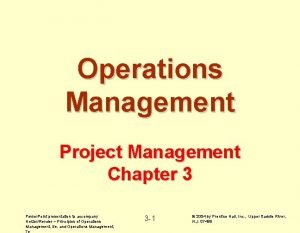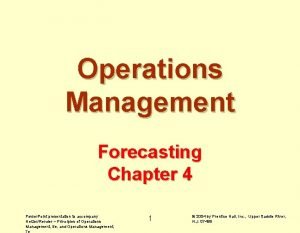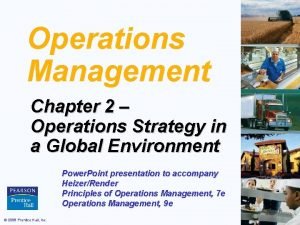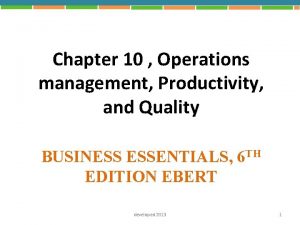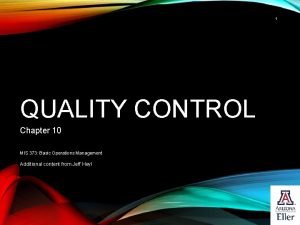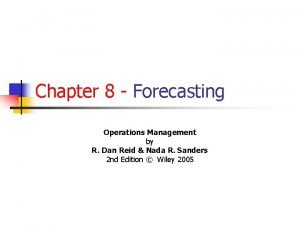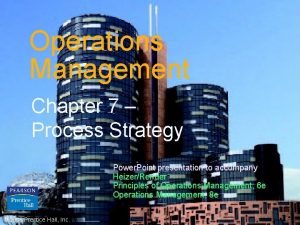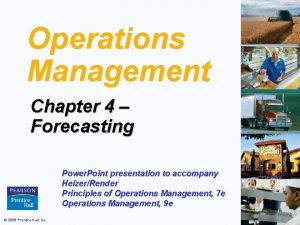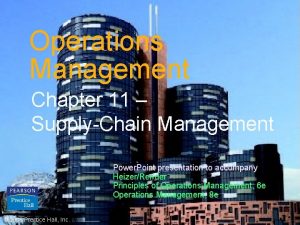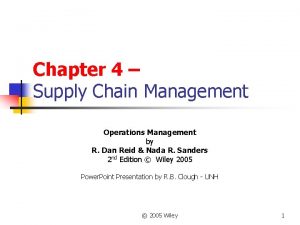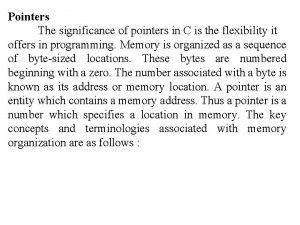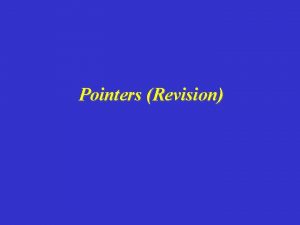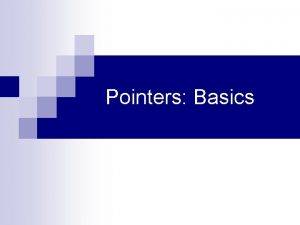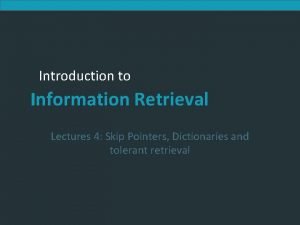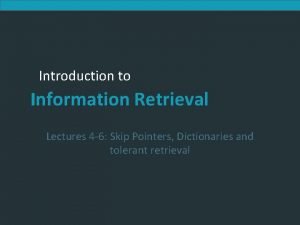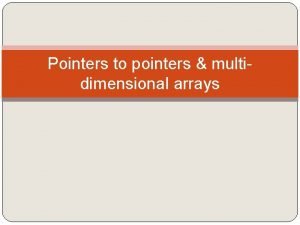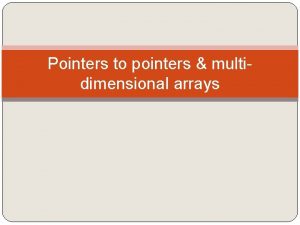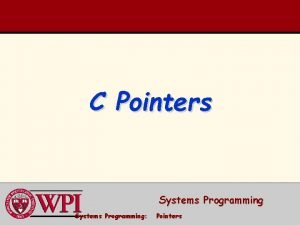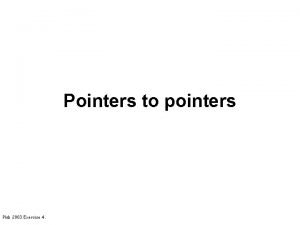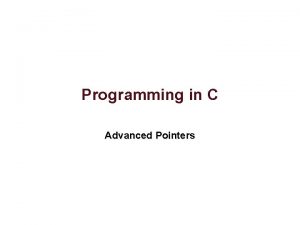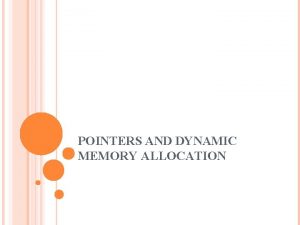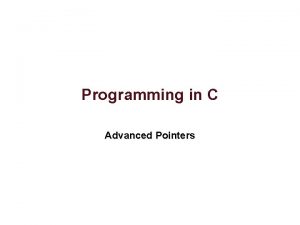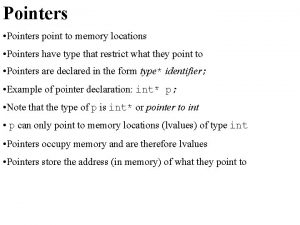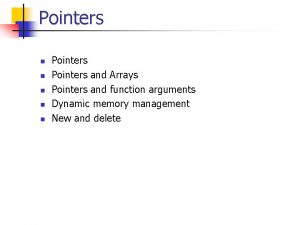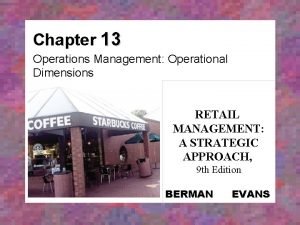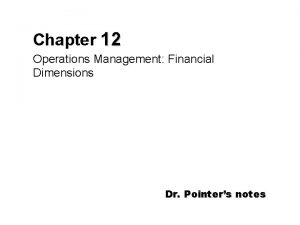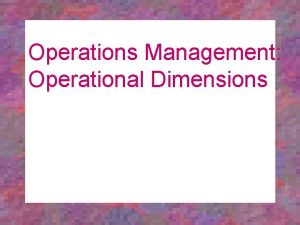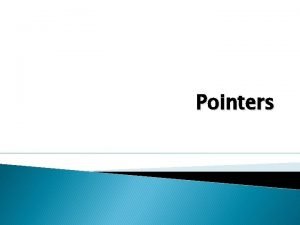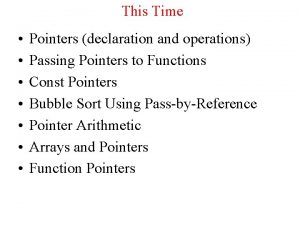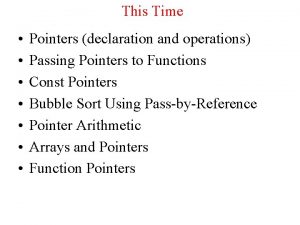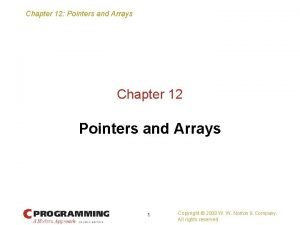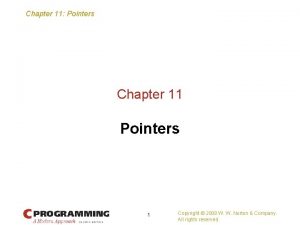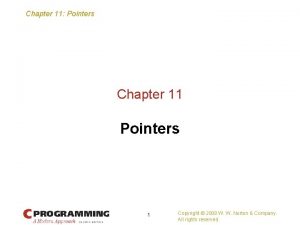Chapter 13 Operations Management Operational Dimensions Dr Pointers
























- Slides: 24

Chapter 13 Operations Management: Operational Dimensions Dr. Pointer’s Notes

Chapter Objectives ³ To describe the operational scope of operations management ³ To examine several specific aspects of operating a retail business: operations blueprint; store format, size, and space allocation; personnel utilization; store maintenance, energy management, and renovations; inventory management; store security; insurance; credit management; computerization; outsourcing; and crisis management 13 -2

Operations Management Operations management is the efficient and effective implementation of the policies and tasks that satisfy a retailer’s customers, employees, and management (and stockholders, if it is publicly owned) 13 -3

Operational Decisions ¯ What operating guidelines are used? ¯ What is the optimal format and size of a store? What is the relationship among shelf space, shelf location, and sales for each item in the store? ¯ How can personnel be matched to customer traffic flows? Would increased staffing improve or reduce productivity? What impact does self-service have on sales? 13 -4

Operational Decisions_2 ¯ What effect does the use of various building materials have on store maintenance? How can energy costs be better controlled? How often should facilities be renovated? ¯ How can inventory best be managed? ¯ How can the personal safety of shoppers and employees be ensured? 13 -5

Operational Decisions_3 ¯ What levels of insurance are required? ¯ How can credit transactions be managed most effectively? ¯ How can computer systems improve operating efficiency? ¯ Should any aspects of operations be outsourced? ¯ What kind of crisis management plans should be in place? 13 -6

Operating A Retail Business ¯ ¯ ¯ 13 -7 Operations Blueprint Store Format, Size, and Space Allocation Personnel Utilization Store Maintenance, Energy Management, and Renovations Inventory Management Store Security Insurance Credit Management Computerization Outsourcing Crisis Management

Operations Blue Print • Operations blueprint is a systematically listing of all the operating functions to be performed, their characteristics, and their timing, • Every operating function from store opening to store closing is included along with who is responsible. • Large stores have multiple blue prints and separate blueprints for store maintenance, inventory, credit and store displays. • View the operations Blueprint in Figure 13 -1 in Text. 13 -8

Store Format, Size and Space Allocations • Where should the store be located – planned shopping center, isolated or where? • Will there be Prototype stores – multiple stores utilizing identical construction, layout, and operations standards • Will a Rationalized retailing program be used – a high degree of centralized management control with strict operating procedures for every phase of business 13 -9

Space Allocation • How to productively use space –determine optimum amount of space, product placement by product category • Top down space management approach • Bottoms up space management approach • Other tactics to improve space productivity include displays, vertical or wall displays • 75% of space may be used for selling (25% for storage, restrooms and etc) 13 -10

Maximizing Personnel Productivity ¯ Hiring Process- carefully screen before hiring ¯ Workload Forecasts- aim to balance costs and have the correct number of workers on the job ¯ Job Standardization and Cross-Training job standardization- similar positions across departments have same tasks Cross training - workers learn tasks associated with more than one job. Both of the above can increase flexibility and reduce the number of workers needed 13 -11

Maximizing Personnel Productivity-2 ¯ Employee Performance Standards- Give each worker clear goals and accountability ¯ Compensation- determine the type and level of financial pay, recognition and promotions needed to keep employees motivated ¯ Self-Service- Can help reduced costs but must not reduce customer service levels ¯ Length of Employment- most full time employees are more productive, knowledgeable, need less supervision than part-timers 13 -12

Store Maintenance • Store maintenance encompasses all the activities in managing the physical facilities. -parking lot, points of entry and exit, outside signage, display windows and etc • Quality of store maintenance affects consumer perceptions, life span of the facilities and operating costs. • Make sure that store is maintained in an attractive manner. Energy maintenance is important because it could be a big cash drainer. 13 -13

Inventory Management Decisions. Important issues to be addressed ¯ How can handling of merchandise from different suppliers be coordinated? ¯ How much inventory should be on the sales floor versus in a warehouse or storeroom? ¯ How often should inventory be moved from nonselling to selling areas of a store? ¯ What inventory functions can be done during nonstore hours? ¯ What are the trade-offs between faster supplier delivery and higher shipping costs? ¯ What supplier support is expected in storing merchandise or setting up displays? ¯ What level of in-store merchandise breakage is acceptable? ¯ Which items require customer delivery? When? By whom? 13 -14

Store Security • Store security relates to two issues: Personal security and safety; merchandise security • Many consumers don’t feel security shopping especially at night • Most older adults do not shop after dark • Retailers need to be proactive and do what is needed to make the shopping experience safe and enjoyable. • Retailers must do the following: 13 -15

Store Security ¯ Uniformed security guards- visible presence ¯ Undercover personnel- complement uniformed guards ¯ Brighter lighting in parking facilities ¯ TV cameras and other devices ¯ Curfews for teenagers may be good ¯ Limited access to backroom facilities ¯ Frequent bank deposits to minimize cash on hand (Do you need armed security guard) 13 -16

Insurance Issues ¯ Rising premiums ¯ Reduced scope of coverage by insurers ¯ Fewer insurers servicing retailers ¯ Greater need for insurance against environmental risks Major type of insurance needed: worker’s compensation, product liability, fire, accident, flood and etc Retailers have implemented other programs to limit vulnerability—no-slip carpet, more care of floors, more elevator checks and etc 13 -17

Credit Management Decisions Major operational decisions to be made ¯ What form of payment is acceptable? ¯ Who administers the credit plan? ¯ What are customer eligibility requirements for a check or credit purchase? ¯ What credit terms will be used? ¯ How are late payments or nonpayments to be handled? 13 -18

Credit Management • Many changes on this front – 1. 5 billion credit and debit cards in circulation • Credit card fees range from 1. 5 to 5. 0 % • Total cost of retailers own credit card process is about 2. 03 % • Debit Card System- card where the purchase price of goods/services are immediately deducted from the account. More retailers will be utilizing this 13 -19

Computerization Issues • Being used more and more to improve operations and increase productivity • High use of videoconferencing • In-store telecommunications – use of pocket phones by store personnel to talk to each other • Sophicated inventory management software is used by many firms • Computerized checkout is used by both large and small retailers • Self Scanning – consumer scans item and then pay by check, credit or debit card (What’s the future? ) 13 -20

Outsourcing • Outsourcing involves paying an outside firm to undertake one or more of operating functions • Typical types of services include credit operations, energy and facility management, shipping and trucking • Outsourcing can provide a higher level of expertise with reduce costs 13 -21

Crisis Management • Crisis management must handle unexpected situations as smoothly as possible. • Contingency plans need to be in place and information communicated to all staff members 13 -22

Crisis Management 1. There should be contingency plans for as many different types of crisis situations as possible 2. Essential information should be communicated to all affected parties as soon as the crisis occurs 3. Cooperation – not conflict – among the involved parties is essential 4. Responses should be as swift as feasible 5. The chain of command should be clear and decision makers given adequate authority 13 -23

Questions 13 -24
 Chapter 12 inventory management
Chapter 12 inventory management Quality management in operations management
Quality management in operations management Operations management with total quality management book
Operations management with total quality management book Operation management chapter 3
Operation management chapter 3 Operations management chapter 4 forecasting solutions
Operations management chapter 4 forecasting solutions International strategy
International strategy Operation management objectives
Operation management objectives Production design in operations management
Production design in operations management Operations management chapter 10
Operations management chapter 10 Operations management chapter 10 quality control solutions
Operations management chapter 10 quality control solutions Chapter 8 operations management
Chapter 8 operations management Operations management chapter 3 forecasting solutions
Operations management chapter 3 forecasting solutions Cross over charts
Cross over charts Associative forecasting example
Associative forecasting example Chapter 11 operations management
Chapter 11 operations management Follow demand exactly
Follow demand exactly 4 flows of supply chain
4 flows of supply chain Competitive operations strategy
Competitive operations strategy Caedb
Caedb Importance of pointers in c
Importance of pointers in c C array of pointers to structs
C array of pointers to structs Pointers basics
Pointers basics Which is a good idea for using skip pointers
Which is a good idea for using skip pointers For skip pointer more skip leads to
For skip pointer more skip leads to Which is a good idea for using skip pointers
Which is a good idea for using skip pointers



